How wearable tech shows that urban wetlands can benefit stressed-out city dwellers
Urban wetlands can help biodiversity, prevent flooding and our wellbeing, and should be a priority. So WWT’s Evidence team, along with Imperial College London, undertook an innovative study to help us make the case to decisionmakers and communities.

We all know that nature is good for our mental and physical health and wellbeing, stirring our senses and helping us feel more connected to the world, as well as being an environment in which to exercise or relax.
However, with many of us now living in towns and cities, governments haven’t prioritised equal access to nature, which might lead people to think that it’s no longer that important to living a fulfilled life. Yet over the years many of us have become more aware of the unnatural rift growing between humans and the natural world, only increased by our retreat into built, urban spaces. The COVID-19 pandemic has also thrown this divide into greater contrast, and reinvigorated an enthusiasm long thought lost, as many of us sought solace in nature during lockdown.
It is estimated that by 2050 two-thirds of the global human population will live in urban centres. Creating nature reserves and spaces in urban settings has, therefore, never been more important, nor helping a wider group of people access them for their wellbeing benefits through new initiatives, such as building more urban wetlands or introducing social prescribing. However, persuasion is still clearly needed, so WWT set out to see if we could further make the case for urban wetlands.
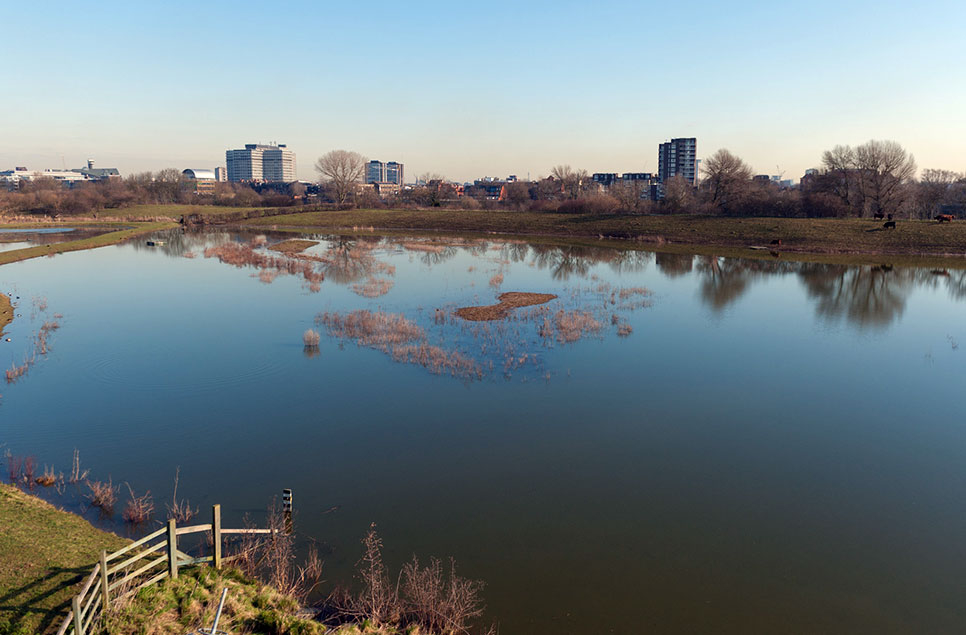
Why do this research?
In order to highlight the importance of urban wetlands, we can collect scientific evidence to demonstrate to decision-makers and communities that urban wetlands and social prescribing should be a priority, and that there are measurable benefits. So WWT’s evidence team, along with Imperial College London, undertook an innovative new study to see if we could quantify people’s experiences in different spaces - one wetland and one urban - trialling different technologies to try and measure the impact of wetlands on health.
There have been few experimental studies exploring the physiological and psychological changes that people undergo when moving from a typical busy urban setting to a relaxed, biodiverse environment. There are also not many studies that look at how water, and wetlands in particular, impact our health.
There’s good, and frequently reported, evidence that people who live near coasts reported higher levels of wellbeing.1 However despite their clear presence in the environment - and their popularity with people - lakes, rivers and other freshwater wetlands have not been given the same attention. The few studies from around the world on this subject that have been done do show positive social and psychological benefits to freshwater ‘blue spaces’ particularly in cities. However there is still a strong need to build on this knowledge base, and this is what we aimed to do with this study.
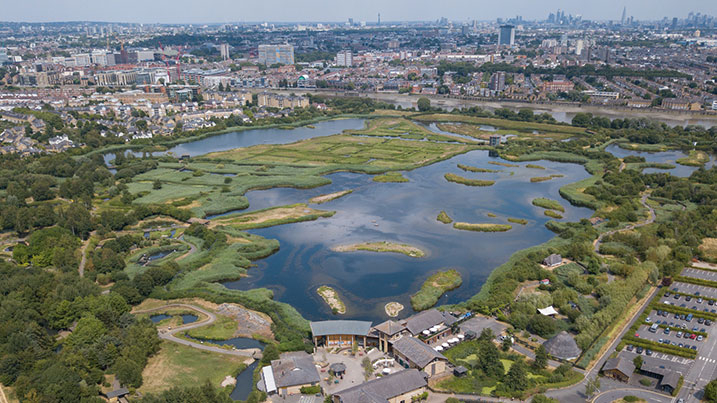
We looked at various physiological and qualitative data in different settings
To conduct the experiment, we chose WWT London Wetland Centre as our site – an urban oasis of wetlands in the heart of the capital city.
This site allowed us to easily move our participants between different situations, that was ten minutes seated in an urban setting, ten minutes inside the wetland and ten minutes indoors (as a control).
We worked with 36 healthy participants who moved between the wetland, urban and control settings while continuously wearing a headset (to measure surface brain electrical activity, EEG), and a wristband (to measure physiological stress responses, heart rate variations and skin activity). We also used questionnaires to measure how the participant rated their mood in each setting.
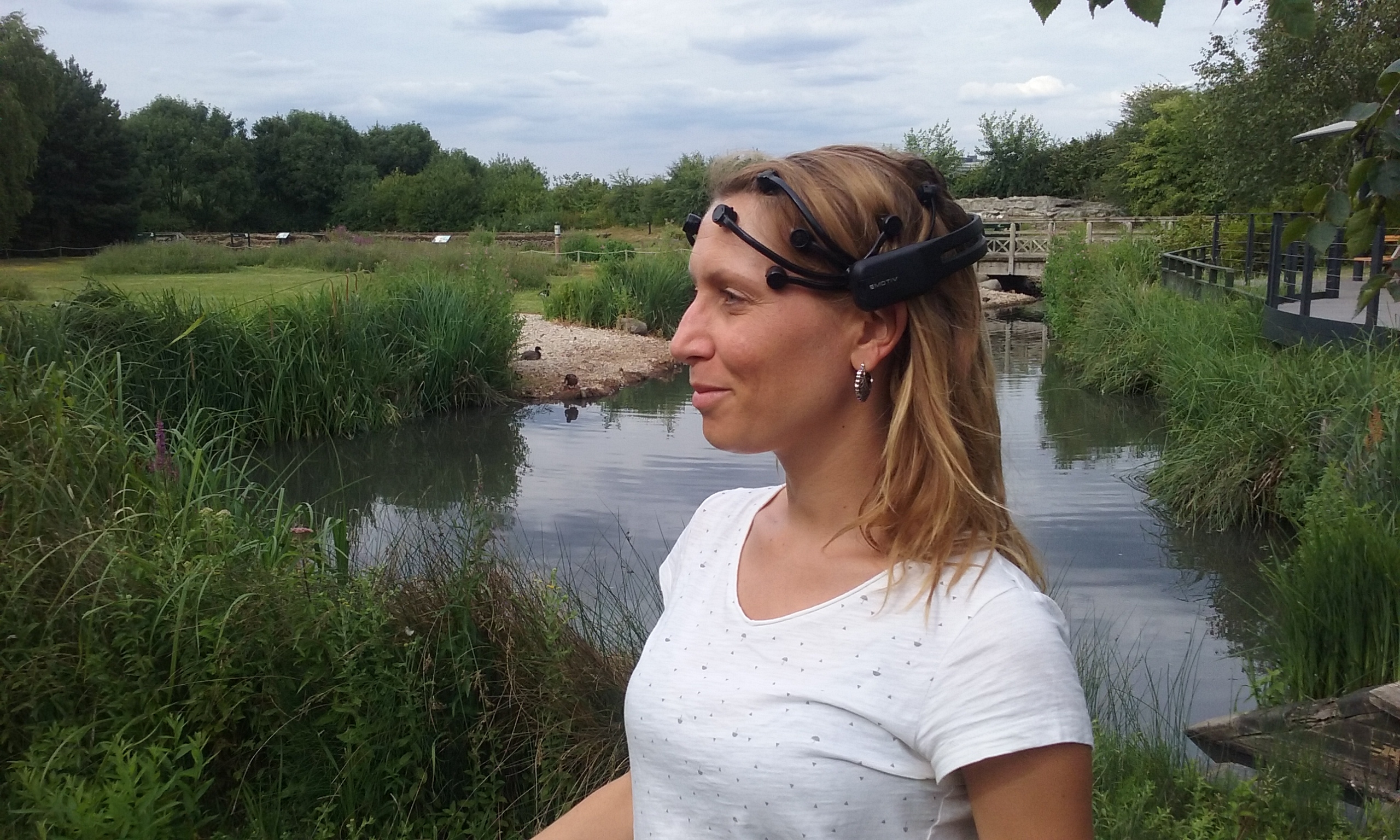
In looking at brain activity (EEG) we aimed to detect differences in the types of brain waves, or neural oscillations, produced in each setting. For example we might expect to see more alpha waves (associated with a relaxed and calm state) in the wetland setting and perhaps more beta waves (an alert and awake state) in the urban. But we also needed to establish if this new technology would work in an outdoor settings, historically EEG was only ever used in very controlled indoor conditions.
Positive mood was found in all participants, but the stressed ones felt the benefits more
Firstly, the study showed wetlands, and nature in general, are likely to impact people differently depending on person to person variation, a result that has also been demonstrated in physiological response to forests.
We found that resting heart rates differed between settings. In wetlands there was no change to heart rate in comparison to the control setting, but there was increased heart rate in the urban setting, importantly this was this was only observed in participants with pre-existing high stress.
Following the questionnaire, people self-reported that 10 minutes in the wetland setting led to an increase in a positive mood in all participants, but a corresponding decrease in negative feelings was only detected in people with pre-existing stress, perhaps understandably as you need to have negative feelings in the first place in order to decrease them.
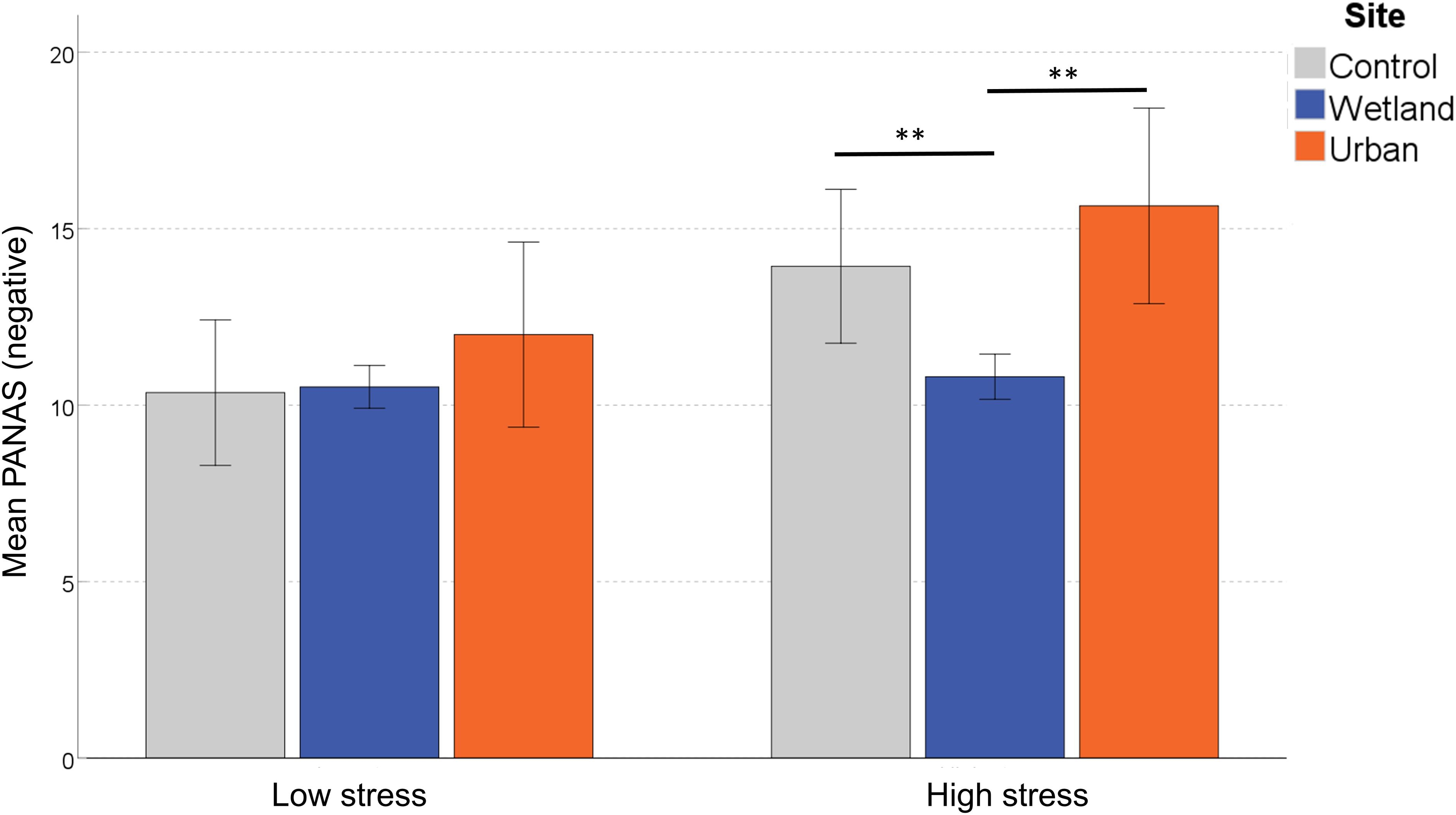
The results from the EEG were inconclusive because of interference in the data quality, which is a useful result in itself as it adds to our understanding of how we can use this measurement in future.
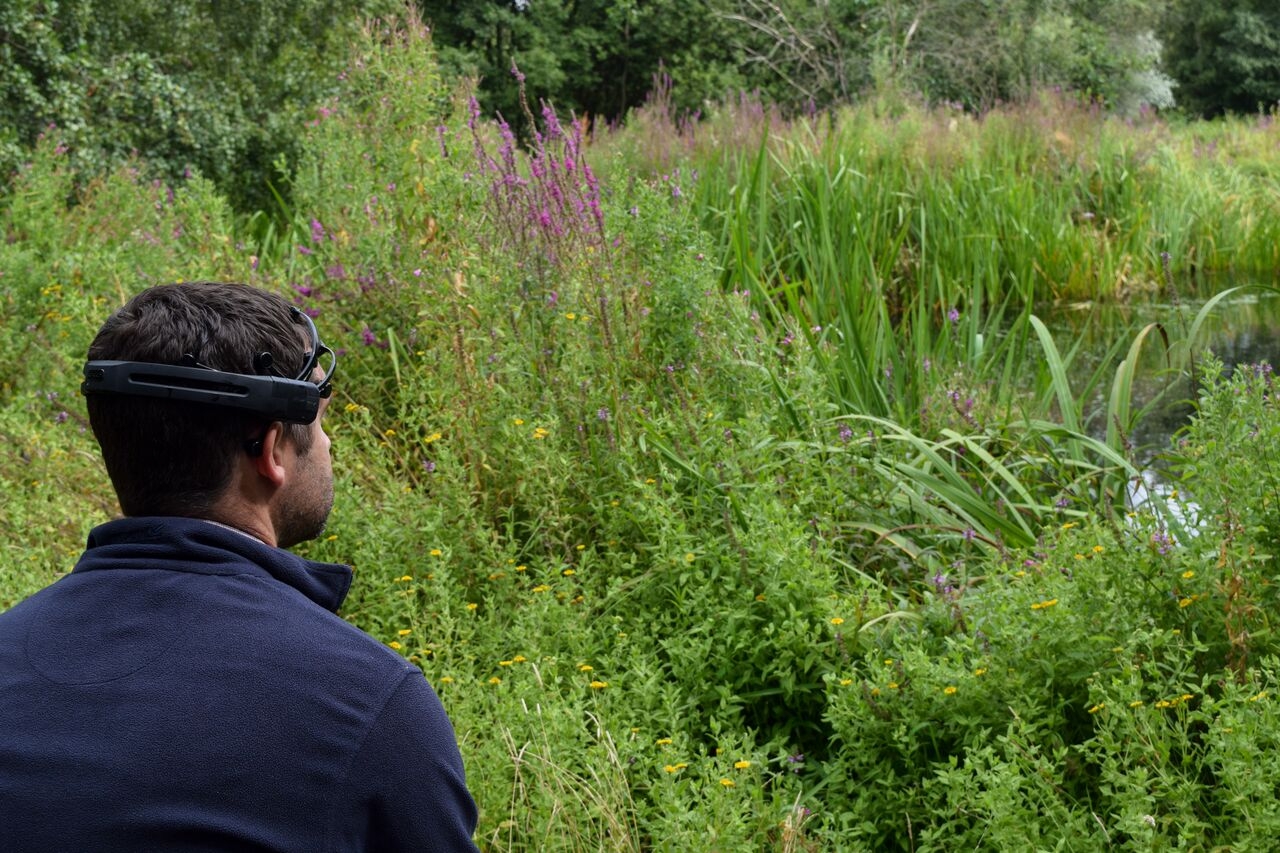
What can we conclude?
Overall, with easier to record measures like heart rate and self-reported mood, just 10 minutes in urban wetlands was sufficient to record positive changes to wellbeing and that the benefits are likely to be greater for those who consider themselves more stressed.
For many, living in cities is more stressful than less built-up areas, as highlighted above we know that people closer to the coast have better wellbeing than those inland. Therefore, urban environments with no natural space in general, may be exacerbating health issues for those already stressed.
Other research points to 120 mins a week might be near the optimal amount of time we should spend in nature a week for our health2. That research also showed that those two hours could be made up from short spells of nature time to get the same benefit, meaning that short 10 minute breaks – as we trialled in this experiment- are likely to bring additive benefit.
Collectively, these results suggest a role for urban wetlands to provide opportunities to stop and reduce stress, and at least to bring us back to ‘baseline’. Overall having an urban network of wetland places that allow us to quickly recharge and manage negative feelings like stress, depression and anxiety might be important for the public’s health as we get more urbanised, as well as the added benefits for biodiversity and preventing flooding that small SuDS wetlands offer. Indeed, biophilia theory suggests that a connection to biodiversity and considering ourselves part of this network, not a separate species, can positively contribute to our wellbeing.
One aim was to first see if the use of new EEG technology outdoors could produce useful data, we concluded that some technological refinement is required before this approach might be used more widely to understand how we engage with natural environments for health – more research needed on that point.
Our mission for wetlands
We're researching ways that wetlands can help our wellbeing, so everyone will recognise the amazing things nature can do for both us and wildlife.
Find out more1 Does living by the coast improve health and wellbeing?, B. Wheeler, M.White, W. Stahl-Timmins & M. Depledge, Health & Place (2012), Happiness is greater in natural environments, MacKerron and Mourato, Global Environmental Change (2013)
2 Spending at least 120 minutes a week in nature is associated with good health and wellbeing, Mathew P.Whiteet al (2019). University of Exeter Medical School



